A photographic offering in praise of the surprisingly beautiful New Holland honeyeater.
The New Holland honeyeater is hyperactive. It would make a blowfly around food at midday on a hot summer’s day look lethargic. In the time it took to take the photos below, I didn’t see one sit still for more than a few seconds. Capturing a photo at all, much less one that was in focus, was not easy. This bird is present in large numbers around Apollo Bay, and seems to favour the coastal vegetation belts. One of my bird books claims it is one of 76 species of honeyeater found in Australia. It is found along the southern coast and immediate hinterland of southern Australia.
These photos were taken on the banks of the Barham River at Apollo Bay (on the south east coast of Australia) during the hour before the sun set yesterday evening. These birds seem to fly around and feed in groups, and most of the photos below are of different individual birds. The vegetation beside the Barham and its tidal mud flats is dense and lush. Reed stalks and small bushes seemed to be favoured perching locations for this honeyeater. It feeds on nectar and insects. Its capacity to manoeuvre and dart in any direction in the blink of an eye would give it the upper hand over many if not most insects in the area.
I have sorted the selection of photos into those showing the bird perched, flying and looking tough. When this bird flies past you get a sense of it being small and dark, perhaps with a flash of white or yellow depending on your vantage point, and quickly gone. I have included photos to show the bird from most angles in an attempt to show its full beauty. The shots of the bird in flight show off the wonderful colour scheme which is really only evident in full flight.
Some of the shots of the bird in flight are of a different quality to the other photos. I won’t claim intentional artistic effect, even though I don’t mind the unintended graininess of some of them. The explanation is that the low light as the sun set (with a few clouds around) required a high ISO and a less than optimal shutter speed. The image was further pushed during editing by cropping significantly from a larger image, to show the detail of this small bird.
Perched
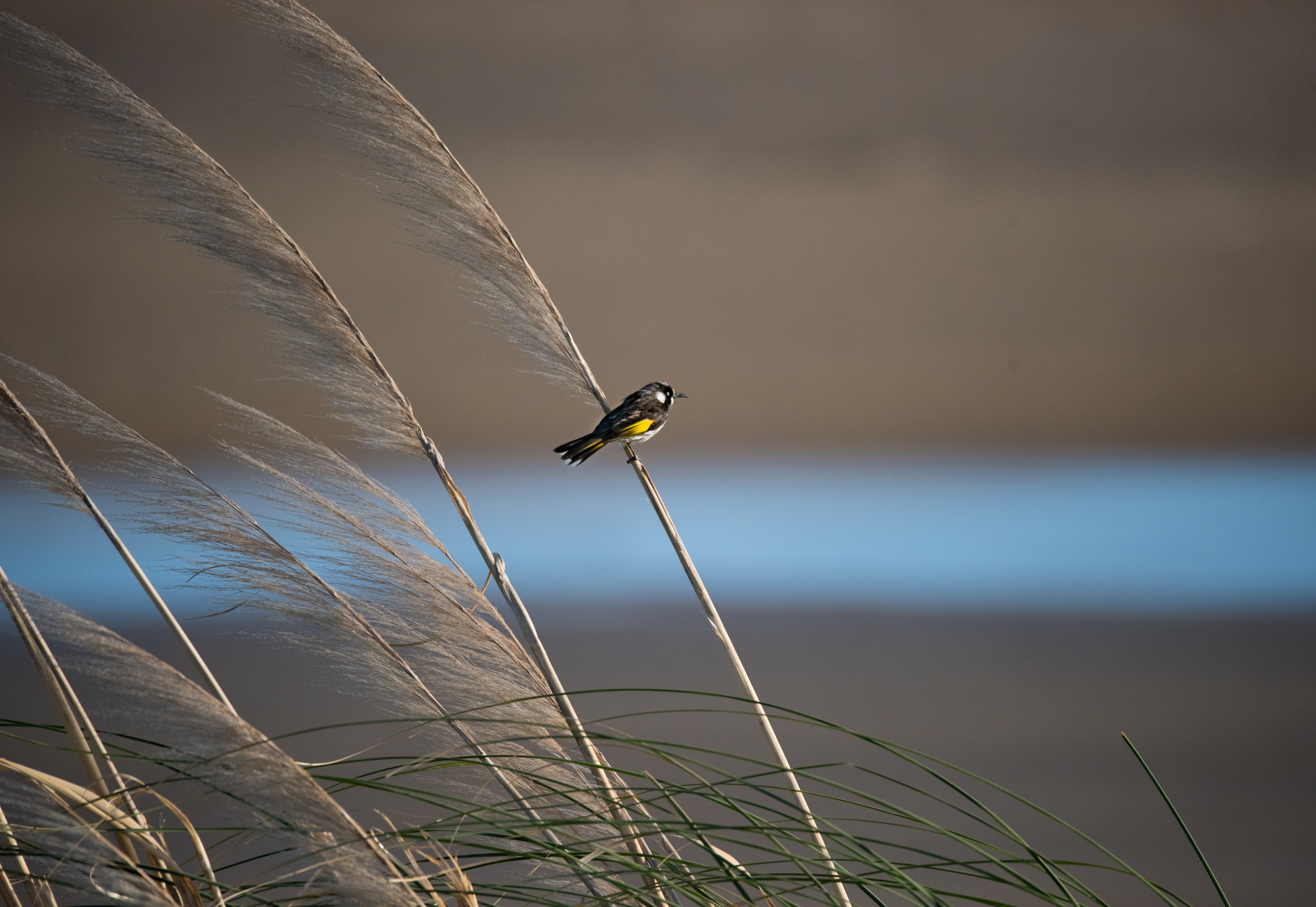











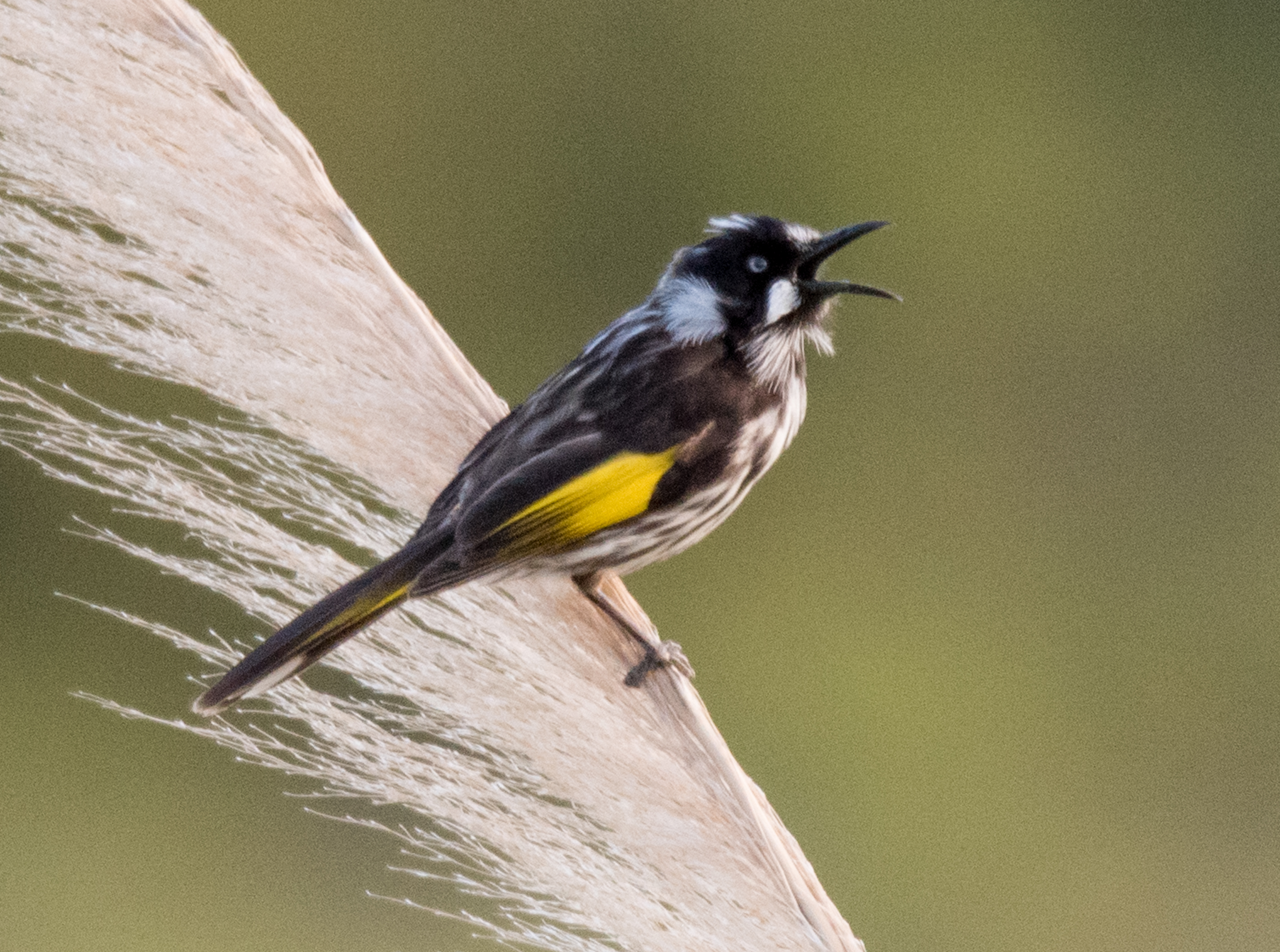

On the wing




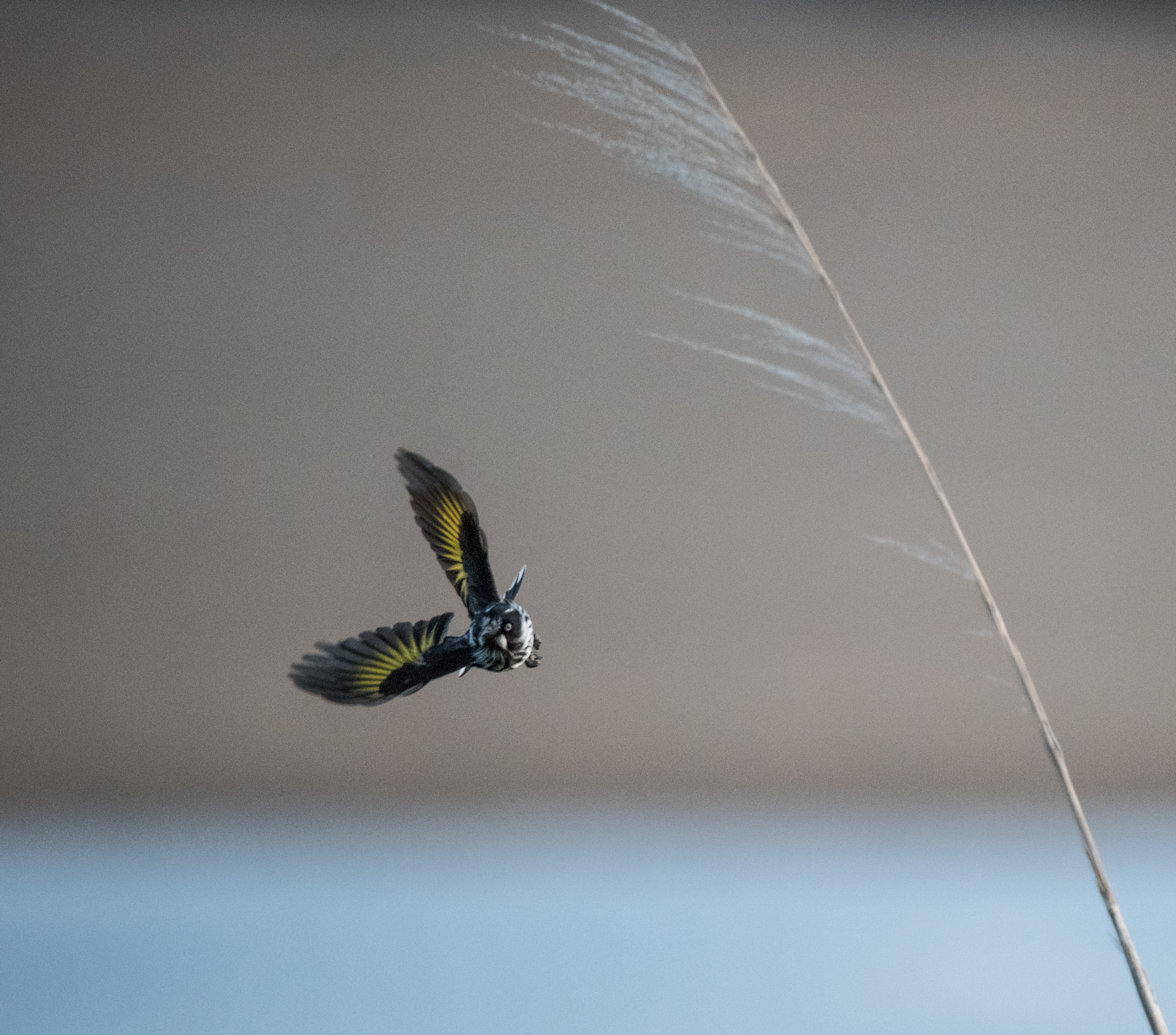
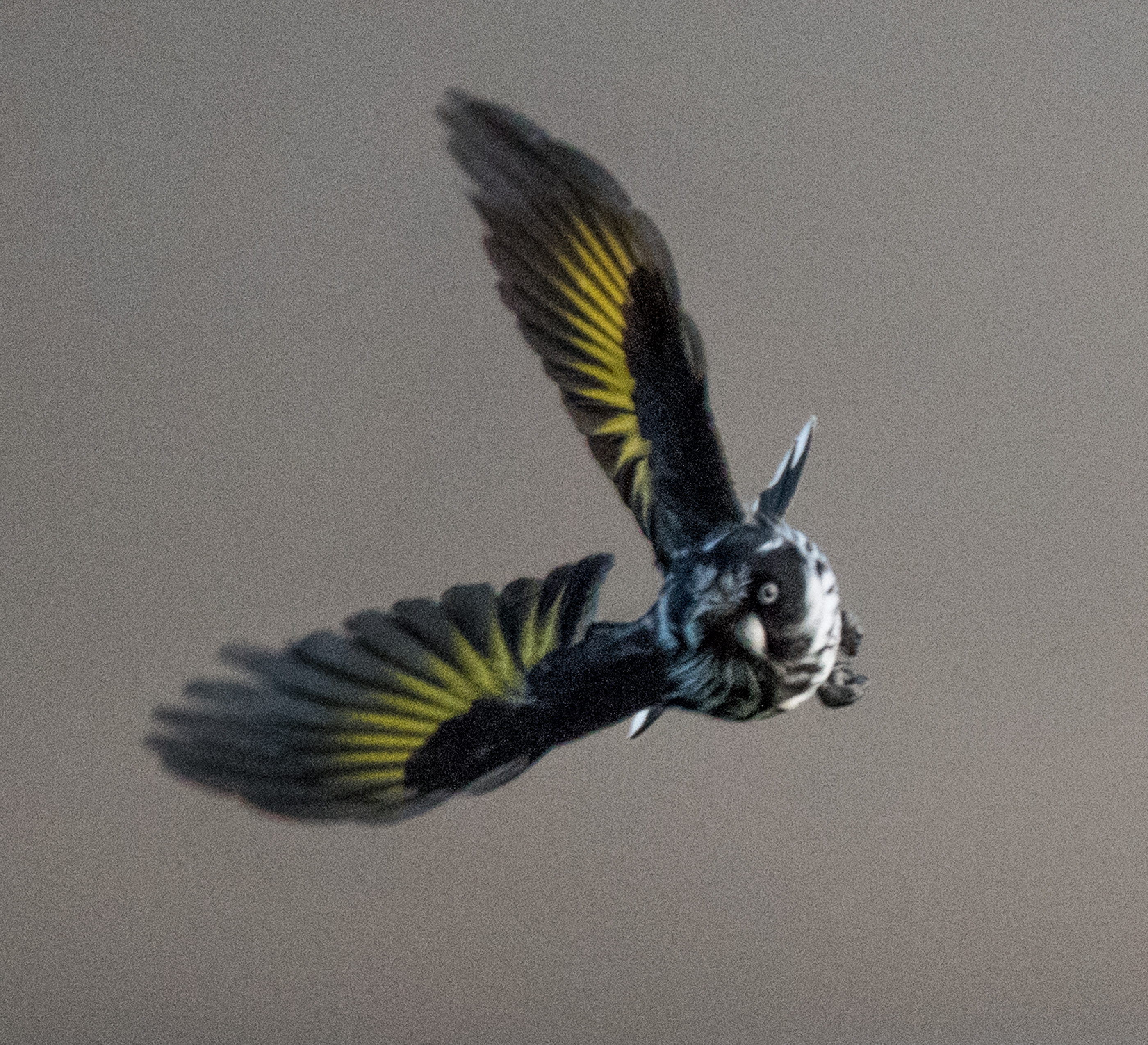







Looking tough
I’m not sure if this look is some sort of defence mechanism, or just an accidental product of the markings around its face when seen straight on. This look simply cannot be seen with the naked eye with the bird flying around or perching momentarily. I had my big telephoto lens set to a focal length of 600mm, and still had to crop and enlarge the image to enable this seriously cranky look to be enjoyed.

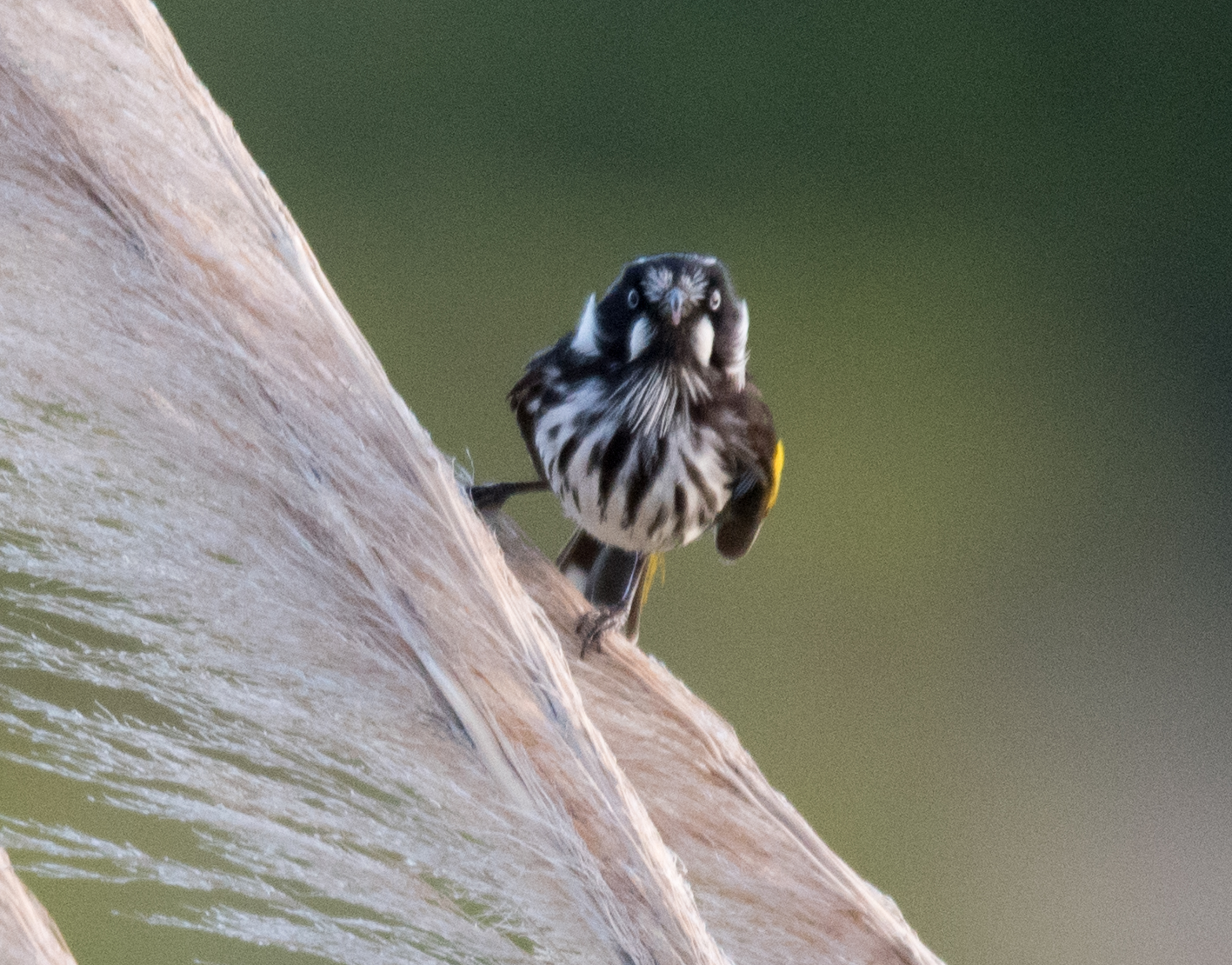

I’m loving the bird on the wing shots, indeed all of the photos you’ve posted are impressive John. The startling white ‘facial’ markings vaguely remind me of miniature tusks. I’m unsure of what would prey upon them, apart from cats obviously. Cheers Jo
LikeLiked by 1 person
I’m pleased you’re enjoying the in-flight entertainment Jo. I can’t imagine this little bird needs any defence mechanism beyond its capacity to dart around at high speed.
Apart from the slight splash of yellow that is visible when it flies, it’s a rather unprepossessing little bird from a distance. But the close-up photos reveal it to be a beautiful bird.
Cheers, John
LikeLike
Beautiful shots Mr. Langmead, I love the bird on the wing, it’s colours are splendid. We have a very similar group of birds that seem to have adapted to the metropolitan lifestyle, in the backyard at Glenroy. They have more zebra white stripes in their plumage.
LikeLiked by 1 person
I shall attempt to capture a shot with my iPhone. An unlikely proposition…
LikeLike
I’d be interested to see it Hughbert. After seeing your recent great photos of the west coast taken from the hang glider, I’m sure your photos of the Glenroy honeyeaters will all be framers.
LikeLike
I keep going back to this one John. This brave, hyperactive little bird is one of my favourites. You’ve captured its moods and personality so well, including in song. I say brave because it knows it will be pursued and harried by territorial wattlebirds and it comes back to its preferred nectar sources on our block time and again.
Hunto
LikeLiked by 1 person
This bird is high on my list of favourites too Hunto. I suspect the agility of the NHH in aerial contest with a wattlebird would see it out-manoeuvre the bigger bird every time. I have seen at AB how unpleasant wattlebirds can be. A young satin bowerbird recently flew at high speed into a window on the side of our house. It was knocked out and lying motionless on the verandah deck. I picked it up and nursed it in my hands until it started to show some signs of life. It seemed to have suffered no major damage apart from being knocked out. Its eyes were soon shiny and alert again. The parent bird was anxiously flying around near the verandah where I was sitting. As the patient seemed to be recovering well I took it down to the lush grass beside Milford Creek and sat it in a comfortable spot then left. The parent bird immediately flew down and joined it, moving around it, touching it, willing it back to flying condition. The young bird still wasn’t moving much. At this point, a wattlebird made a low aggressive swoop over the two, full of intent, and landed on a low branch on a nearby tree eyeballing the duo. The parent bowerbird crouched beside the recovering youngster, watching the wattlebird closely. As soon as the wattlebird moved as if to takeoff, the bowerbird powered into the air and fearlessly charged straight at it. The defensive conduct (more of a counter-attack) was so intense that the wattlebird quickly gave up and left the scene. As if following a happy-story script, the parent went back to junior, who without further ado flew up and away with no sign of the wobbles, its parent flying beside it. A touching birdlife cameo to witness.
LikeLike